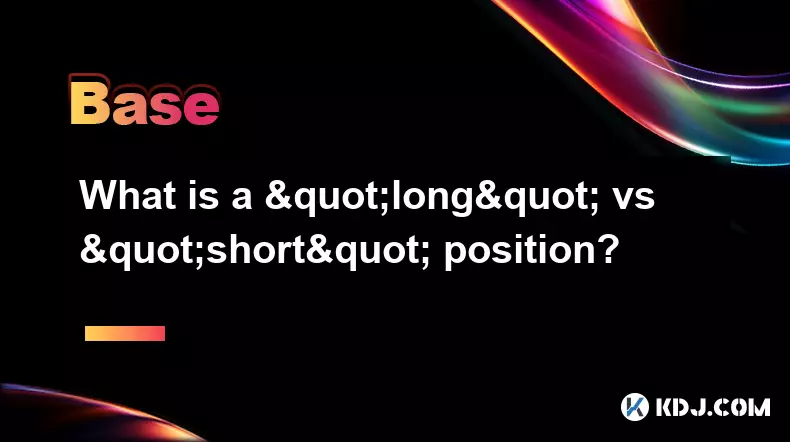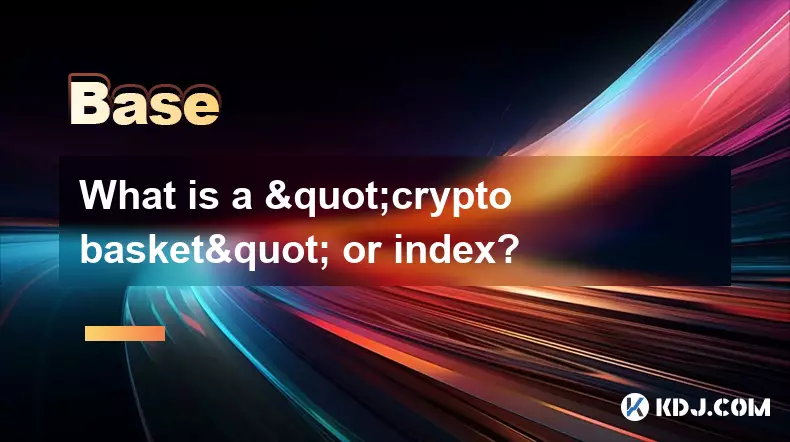-
 Bitcoin
Bitcoin $112100
0.77% -
 Ethereum
Ethereum $4474
3.78% -
 XRP
XRP $2.851
0.46% -
 Tether USDt
Tether USDt $1.000
0.01% -
 BNB
BNB $856.0
0.45% -
 Solana
Solana $209.3
1.04% -
 USDC
USDC $0.9998
-0.02% -
 Dogecoin
Dogecoin $0.2216
3.68% -
 TRON
TRON $0.3420
1.19% -
 Cardano
Cardano $0.8415
1.56% -
 Chainlink
Chainlink $23.79
1.74% -
 Hyperliquid
Hyperliquid $46.03
3.38% -
 Ethena USDe
Ethena USDe $1.001
0.04% -
 Sui
Sui $3.399
2.98% -
 Bitcoin Cash
Bitcoin Cash $599.8
3.03% -
 Stellar
Stellar $0.3628
-0.44% -
 Avalanche
Avalanche $25.24
4.29% -
 Cronos
Cronos $0.2809
9.58% -
 Hedera
Hedera $0.2203
0.68% -
 UNUS SED LEO
UNUS SED LEO $9.526
-0.04% -
 Litecoin
Litecoin $112.7
0.88% -
 Toncoin
Toncoin $3.188
0.41% -
 Shiba Inu
Shiba Inu $0.00001253
0.80% -
 Polkadot
Polkadot $3.891
2.61% -
 Uniswap
Uniswap $9.732
2.10% -
 Bitget Token
Bitget Token $4.971
-2.70% -
 Dai
Dai $0.0000
0.01% -
 World Liberty Financial
World Liberty Financial $0.2148
-8.62% -
 Aave
Aave $327.8
3.77% -
 Monero
Monero $270.0
1.47%
What is a "long" vs "short" position?
Going long means buying crypto to profit from rising prices, while shorting involves selling borrowed assets to benefit from declines, each carrying distinct risks and rewards.
Sep 04, 2025 at 04:55 am

Understanding Long and Short Positions in the Cryptocurrency Market
What Does Going Long Mean?
1. Taking a long position in the crypto market means buying a digital asset with the expectation that its price will rise over time. Traders who go long are essentially betting on upward price movement. This is the most common strategy among investors, especially those who believe in the long-term potential of a specific cryptocurrency.
2. When a trader opens a long position, they purchase assets such as Bitcoin or Ethereum using their own capital or through margin trading. The goal is to sell the asset at a higher price in the future, thus realizing a profit from the difference between the purchase and sale price.
3. Long positions can be held for varying durations—ranging from minutes in day trading to several years in long-term investing. The strategy aligns closely with the 'buy and hold' philosophy, particularly popular in bull markets where optimism about price increases is widespread.
4. In derivatives trading, going long can also refer to opening a long futures or perpetual contract. In this case, the trader doesn’t necessarily own the underlying asset but agrees to buy it at a future date at a predetermined price, profiting if the market price exceeds the contract price.
5. A key risk of long positions is exposure to downward price swings. If the market moves against the trader, losses can accumulate, especially when leverage is involved. Proper risk management, such as setting stop-loss orders, is crucial when maintaining long exposure.
What Is a Short Position?
1. A short position involves selling a cryptocurrency that the trader does not currently own, with the intention of buying it back later at a lower price. This strategy profits from falling prices, making it a tool used during bear markets or when a specific asset is expected to decline in value.
2. In traditional shorting, traders borrow assets from a broker or exchange, sell them immediately at the current market price, and wait for the price to drop. Once the price falls, they repurchase the same amount of the asset and return it to the lender, keeping the difference as profit.
3. In the crypto space, many exchanges offer margin trading and derivatives like futures and perpetual swaps that allow traders to take short positions without directly borrowing assets. These instruments enable synthetic shorting by opening a sell order on a contract that gains value as the underlying asset’s price drops.
4. Shorting requires precise timing and carries significant risk. If the price of the asset rises instead of falls, the trader faces unlimited potential losses, as there is no theoretical cap on how high a cryptocurrency’s price can go. This makes shorting riskier than going long in volatile markets.
5. Despite the risks, short positions play a vital role in market efficiency. They contribute to price discovery and provide liquidity. Experienced traders often use shorting as a hedging tool to protect their long portfolios during market downturns.
Differences Between Long and Short Strategies
1. The fundamental difference lies in market outlook: long positions reflect bullish sentiment, while short positions reflect bearish sentiment. A trader going long expects growth; one going short anticipates decline.
2. Capital requirements vary. Going long typically requires upfront capital to purchase assets. Shorting, especially on margin, may require collateral and is subject to funding rates and borrowing fees on certain platforms.
3. Risk profiles differ significantly. Long positions have limited downside—the maximum loss is the amount invested—while short positions have theoretically unlimited risk due to uncapped price increases.
4. Profit mechanics are inverse. Long profits come from price appreciation; short profits come from depreciation. Both require accurate market timing, but shorting demands tighter risk controls due to the asymmetry of potential losses.
5. Market impact also varies. Sustained long pressure can drive prices upward through increased demand. Aggressive shorting, particularly in leveraged markets, can accelerate price drops and trigger liquidations, contributing to sharp downward volatility.
Frequently Asked Questions
How do I open a long or short position on a crypto exchange?Most major exchanges offer spot trading for long positions and derivatives like futures for both long and short trades. To go long, you buy the asset directly. To short, you can use margin or futures markets where you can sell contracts first and buy them back later.
Can I short Bitcoin without using leverage?Yes, some platforms allow non-leveraged shorting through mechanisms like peer-to-peer borrowing or options contracts. However, most short positions in crypto involve some degree of leverage, especially on centralized exchanges.
What happens if my short position gets liquidated?Liquidation occurs when the price moves against your short and your collateral falls below the maintenance margin. The exchange automatically closes your position to prevent further losses, resulting in a loss of part or all of your initial margin.
Is going long safer than shorting?In general, yes. A long position cannot lose more than the invested amount, whereas a short can incur losses beyond initial capital if the price surges. This inherent asymmetry makes long positions less risky for most retail traders.
Disclaimer:info@kdj.com
The information provided is not trading advice. kdj.com does not assume any responsibility for any investments made based on the information provided in this article. Cryptocurrencies are highly volatile and it is highly recommended that you invest with caution after thorough research!
If you believe that the content used on this website infringes your copyright, please contact us immediately (info@kdj.com) and we will delete it promptly.
- Crypto Treasury, Startup Strategies, & Investment Opportunities: A New Yorker's Take
- 2025-09-04 09:05:12
- Moca Network's $20M Portfolio: A New Era for Community Rewards?
- 2025-09-04 09:05:12
- XDC Network Price Prediction 2026: Is XDC the Dark Horse of Crypto?
- 2025-09-04 08:25:15
- BullZilla Roar, Bonk Stablecoin, and Solana Alpenglow: The Evolution of Meme Coins
- 2025-09-04 09:25:17
- TRON, GDP Data, and the Commerce Department: A Blockchain Milestone
- 2025-09-04 09:25:17
- Dogecoin, VaultX, and DOT Miners: A New Era for Crypto Finance?
- 2025-09-04 07:05:16
Related knowledge

What is "backtesting" a crypto trading strategy?
Sep 03,2025 at 10:55am
Understanding Backtesting in Crypto TradingBacktesting is the process of evaluating a trading strategy by applying it to historical market data. Trade...

What is a "crypto trading bot" and do they work?
Sep 02,2025 at 04:19pm
Understanding Crypto Trading Bots1. A crypto trading bot is a software application designed to automate the process of buying and selling cryptocurren...

What is a "copy trading" platform?
Sep 02,2025 at 07:00pm
Understanding Copy Trading in the Cryptocurrency Space1. A copy trading platform allows users to automatically replicate the trades of experienced inv...

What is "social trading" for crypto?
Sep 03,2025 at 09:00pm
Understanding Social Trading in the Cryptocurrency Space1. Social trading refers to a method where investors observe, follow, and automatically replic...

What is a "crypto basket" or index?
Sep 03,2025 at 07:01am
Understanding Crypto Baskets and Their Role in Digital Asset Investment1. A crypto basket refers to a curated collection of multiple cryptocurrencies ...

What are "impermanent loss" calculators?
Sep 03,2025 at 12:00pm
Understanding Impermanent Loss in Decentralized Finance1. Impermanent loss is a phenomenon that affects liquidity providers in decentralized exchanges...

What is "backtesting" a crypto trading strategy?
Sep 03,2025 at 10:55am
Understanding Backtesting in Crypto TradingBacktesting is the process of evaluating a trading strategy by applying it to historical market data. Trade...

What is a "crypto trading bot" and do they work?
Sep 02,2025 at 04:19pm
Understanding Crypto Trading Bots1. A crypto trading bot is a software application designed to automate the process of buying and selling cryptocurren...

What is a "copy trading" platform?
Sep 02,2025 at 07:00pm
Understanding Copy Trading in the Cryptocurrency Space1. A copy trading platform allows users to automatically replicate the trades of experienced inv...

What is "social trading" for crypto?
Sep 03,2025 at 09:00pm
Understanding Social Trading in the Cryptocurrency Space1. Social trading refers to a method where investors observe, follow, and automatically replic...

What is a "crypto basket" or index?
Sep 03,2025 at 07:01am
Understanding Crypto Baskets and Their Role in Digital Asset Investment1. A crypto basket refers to a curated collection of multiple cryptocurrencies ...

What are "impermanent loss" calculators?
Sep 03,2025 at 12:00pm
Understanding Impermanent Loss in Decentralized Finance1. Impermanent loss is a phenomenon that affects liquidity providers in decentralized exchanges...
See all articles

























































































